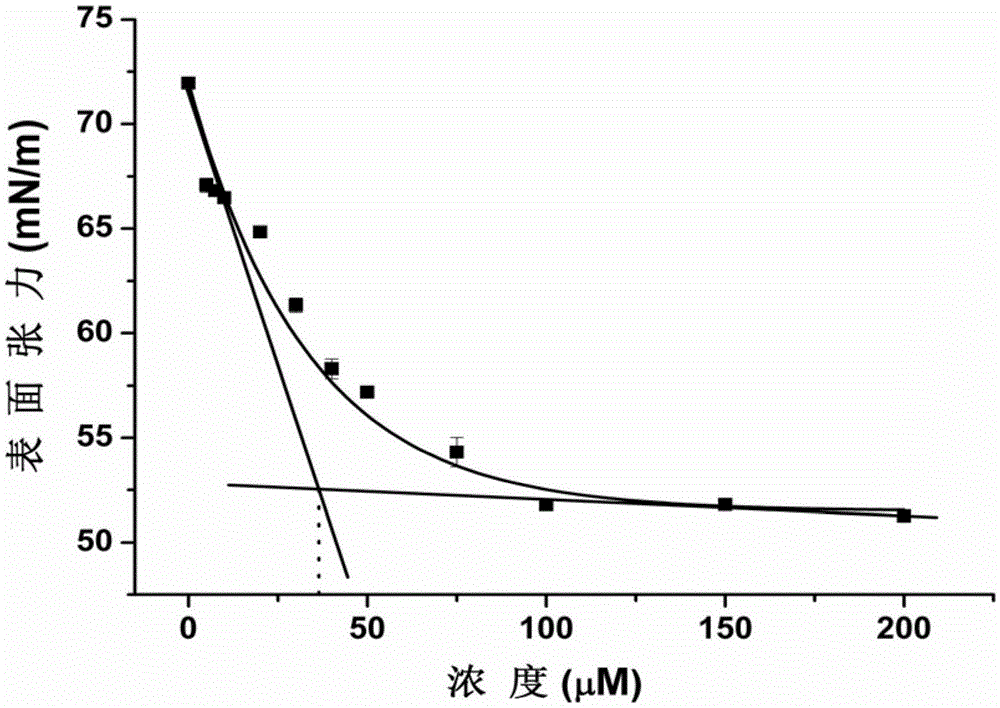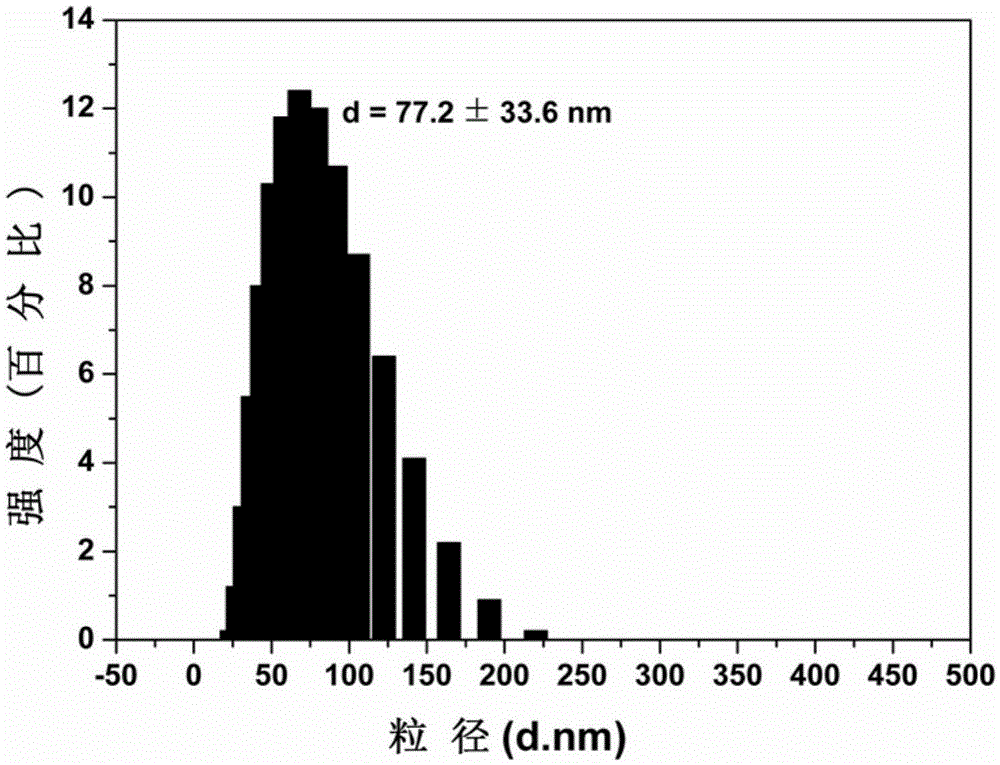Amphipathic Eu (III) complex and application thereof in detection for cytidine triphosphate
A cytosine nucleoside triphosphate and complex technology, applied in fluorescence/phosphorescence, material excitation analysis, etc., can solve the problems of narrow application range, low sensitivity, large measurement error, etc., and achieve large Stokes shift, Effects of long fluorescence lifetime and Stokes shift coordination unsaturation
- Summary
- Abstract
- Description
- Claims
- Application Information
AI Technical Summary
Problems solved by technology
Method used
Image
Examples
Embodiment 1
[0027] 1. Synthetic Compound 2
[0028] Under nitrogen protection conditions, 1.1789g (1mmol) of compound 1, 0.993g (3.6mmol) of bromoacetamide, 0.366g of potassium iodide (2.2mmol) and 2.5mL (16.8mmol) of triethylamine were dissolved in 50mL of absolute ethanol, Reflux reaction at 90°C for 110 hours. After the reaction, distill off ethanol under reduced pressure, separate by column chromatography (gradient elution with a mixture of chloroform and methanol with a volume ratio of 5:1 to 1:5), and vacuum-dry at 35°C. , to obtain compound 2, its yield is 50.8%, and the reaction equation is as follows:
[0029]
[0030] The structural characterization data of the obtained compound 2 is: 1 H-NMR (400MHz, D 2 O): 3.99 (2H, CH 2 NH), 3.54 (8H, CH 2 CO), 2.76-3.34 (16H, CH 2 Ring), 1.49 (2H, CH 2 ), 1.26 (30H, CH 2 ), 0.84 (3H, CH 3 ).
[0031] 2. Synthesis of amphiphilic Eu(Ⅲ) complexes
[0032] 0.163g (0.25mmol) of compound 2 was added to a flask containing 30mL of dist...
Embodiment 2
[0036] The application of amphiphilic Eu(Ⅲ) complexes in the detection of cytidine triphosphate, the detection method is as follows:
[0037]1. Completely dissolve 1.82 mg (2 μmol) of the amphiphilic Eu(Ⅲ) complex in 20 mL of 10 mmol / L 4-hydroxyethylpiperazineethanesulfonic acid buffer solution with a pH value of 7.0 to obtain 100 μmol / L amphiphilic Eu(Ⅲ) III) complex solution, the solution was kept at 60° C. for 2 hours, cooled naturally to room temperature, and left standing at room temperature for 8 hours to obtain an amphiphilic Eu(III) complex solution forming uniform vesicles. The morphology of the formed vesicles was characterized by dynamic light scattering and transmission electron microscopy. The results are shown in figure 2 , 3 . It can be seen from the figure that the amphiphilic Eu(Ⅲ) complex forms spherical vesicle aggregates with uniform size in the buffer solution, and the average diameter is 70-90nm.
[0038] 2. Add α-sodium naphthalene phosphate to the a...
PUM
 Login to View More
Login to View More Abstract
Description
Claims
Application Information
 Login to View More
Login to View More - Generate Ideas
- Intellectual Property
- Life Sciences
- Materials
- Tech Scout
- Unparalleled Data Quality
- Higher Quality Content
- 60% Fewer Hallucinations
Browse by: Latest US Patents, China's latest patents, Technical Efficacy Thesaurus, Application Domain, Technology Topic, Popular Technical Reports.
© 2025 PatSnap. All rights reserved.Legal|Privacy policy|Modern Slavery Act Transparency Statement|Sitemap|About US| Contact US: help@patsnap.com



